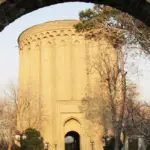Located in the Afar Depression in northeastern Ethiopia, the Danakil Desert is one of the most extreme and inhospitable places on Earth. Known for its surreal landscapes and scorching temperatures, this desert stands as a powerful testament to the resilience of nature and humanity.

A Fiery Furnace of Heat
The Danakil Desert is infamous for its oppressive heat, with temperatures regularly exceeding 35°C and sometimes soaring to an unbearable 47°C during the peak of June. This intense heat, coupled with minimal rainfall, makes the desert one of the hottest and driest places on the planet. Its arid conditions have earned it the nickname “The Gateway to Hell.”
A Unique and Harsh Terrain
The desert’s landscape is unlike any other, with its vibrant colors, hyperacidic springs, and toxic air creating a hostile yet mesmerizing environment. Among its most extraordinary features is the Dallol Crater, a geothermal wonder.
The Dallol Crater is characterized by acid lagoons, kaleidoscopic mineral deposits, and ceaseless hydrothermal activity. The vibrant hues of yellow, green, and orange result from the high concentration of sulfur, iron, and other minerals. The otherworldly scenery of the crater has been likened to an alien planet, attracting scientists and adventurers alike.
Volcanic Activity in the Region
Adding to the desert’s extreme nature are several active volcanoes scattered across the region. These fiery giants not only shape the desert’s rugged terrain but also contribute to its hazardous conditions. Lava flows, sulfur vents, and frequent tremors make the Danakil Desert a geological hotspot and a place of fascination for researchers studying Earth’s volcanic activity.
Afar People: Masters of Adaptation
Amidst the unyielding hostility of this environment, the Afar people have carved out a life in the Danakil Desert for over 2,000 years. Their remarkable resilience is a testament to human endurance and adaptability.
The Afar people are known for their traditional salt mining practices, a trade that has been passed down through generations. Using camels to transport large slabs of salt across the desert, they continue to extract one of the region’s most valuable resources despite the grueling heat and physical toll.
A Land of Scientific and Cultural Interest
The Danakil Desert is not only a natural wonder but also a site of immense scientific and cultural importance. Its extreme conditions offer valuable insights into extremophile organisms—life forms that thrive in the harshest environments on Earth. These discoveries have implications for understanding potential life on other planets.
Additionally, the desert’s salt flats and geothermal activity serve as a window into Earth’s geological history, drawing geologists and researchers from around the world.
Like Us on Facebook!
An Unforgiving Beauty
While the Danakil Desert may seem hostile and barren, it holds a unique and unforgiving beauty. Its alien landscapes, vibrant colors, and raw geological activity make it one of the most surreal places on Earth. For those brave enough to venture into its heart, the desert offers an unparalleled experience of nature’s extremes.
Subscribe Us on YouTube!
A Testament to Survival
The Danakil Desert is more than just an inhospitable terrain; it is a symbol of survival and resilience. Whether it is the Afar people thriving in one of the harshest climates or the scientific discoveries that continue to unfold, this remarkable desert is a reminder of the strength and adaptability of both life and Earth itself.
For adventurers, scientists, and those with a fascination for the extraordinary, the Danakil Desert stands as an enduring challenge and an unforgettable marvel.


















